Karlo Taliana is a member of APS East Hills Group. All photos by Karlo.
Most of my walking is spent around the Picnic Point area where some of the greatest general flora diversity exists. Each year, our local pea flowers decorate the bush with a variety of colours while also providing a valuable food source for insects. As the seasons roll by, each species steps forward on cue followed by others when their turn arrives often avoiding competition for pollinators. From my observations, pea flower regeneration in our local bushland appears to be highly successfully judging by the number of heavily-pollinated specimens.
Australian peas belong to the Fabaceae family (sub-family Faboideae). Our local pea species are mostly small shrubs although some can be climbers, scramblers, groundcovers or even larger tall shrubs. Our current species list includes:
- Bossiaea ensata, Bossiaea heterophylla, Bossiaea prostrata
- Daviesia acicularis, Daviesia alata, Daviesia corymbosa, Daviesia uilicifolia
- Dillwynia retorta, Dillwynia rudis, Dillwynia sericea
- Glycine clandestina, Glycine tabacina
- Gompholobium glabratum, Gompholobium grandiflorum
- Hardenbergia violacea
- Hovea heterophylla
- Indigofera australis
- Jacksonia scoparia
- Kennedia rubicunda
- Mirbelia rubiifolia, Mirbelia speciosa
- Phyllota phylicoides
- Pultenaea daphnoides, P. flexilis, P. hispidula, P. retusa, P. stipularis, P. villosa, P. tuberculata
- Viminaria juncea
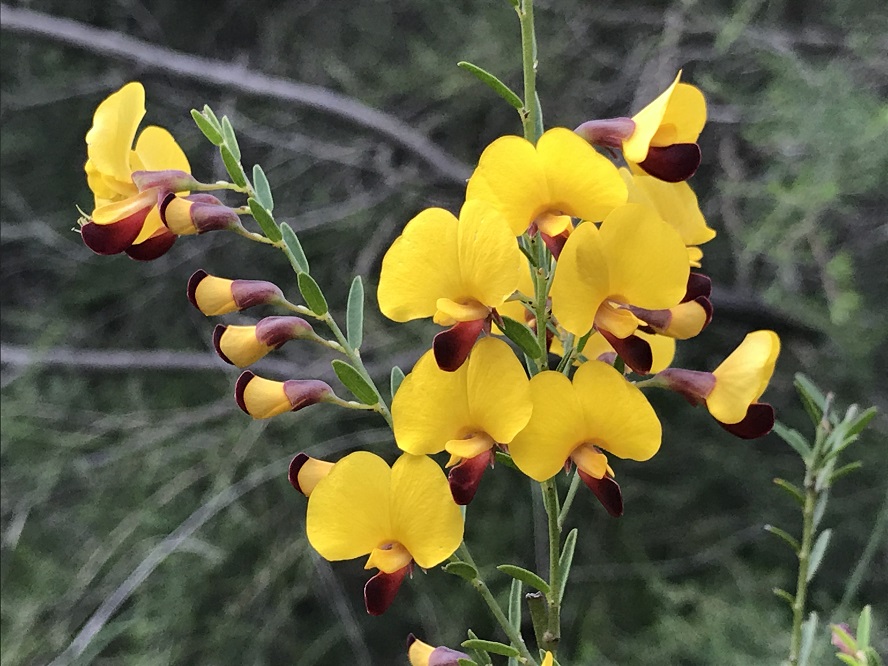
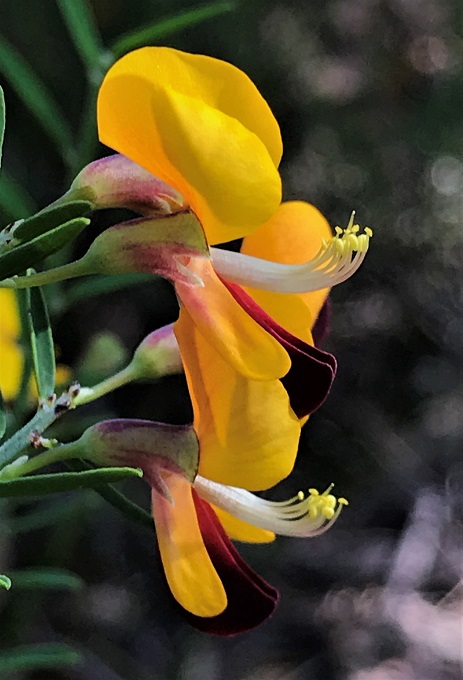
Bossiaea heterophylla (Variable Bossiaea) is one of our first peas to flower each year starting in autumn. It grows as an upright open shrub to one metre with flattened stems bearing large yellow and brown flowers. Photo below with bee.
Late in the flowering season, non-pollinated pea flowers will release their stamens to ensure pollination occurs.
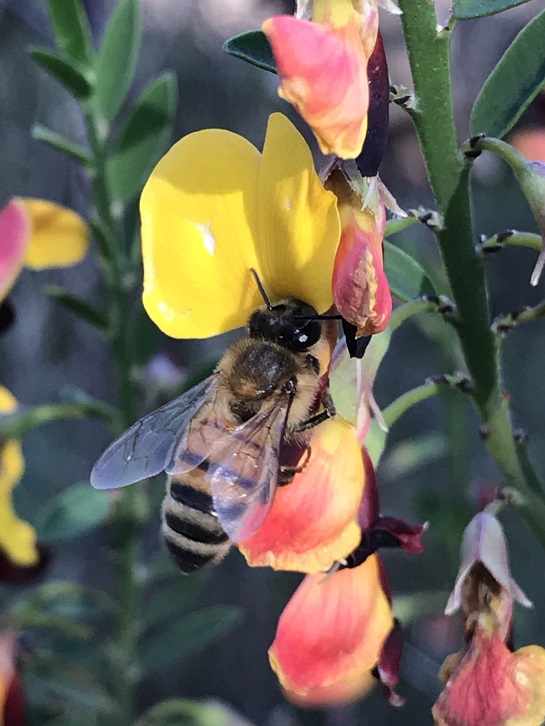
Daviesia acicularis is probably our rarest pea flower. Aside from just two plants in local government reserves north of the Georges River, there were only a few plants known to exist at Picnic Point in 2019. Unfortunately, two perished in the drought of 2019 while another four were destroyed with the widening of fire trails. Only two known plants remain in the laterite areas on Picnic Point ridge. The phyllodes (leaves) of this species are very sharply-pointed while the margins are also toothed making it one of the most prickly native plants in our local area. The fruits of all Daviesia are triangular in shape.
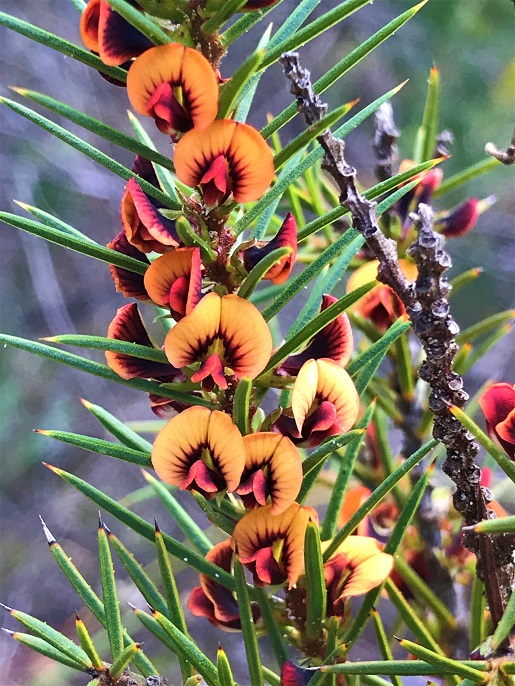
Daviesia alata is another rarely seen pea flower, although according to local flora experts, it is now presumed extinct north of the Georges River (having not been seen for over 15 years now since last sighted at Picnic Point). It grows as a low groundcover shrub with stems having a triangular cross-section and its leaves reduced to scales. There are very few specimens remaining south of the Georges River at Menai on the laterite areas and these are also under threat due to poor land management such as clearing and the dumping of mulch.
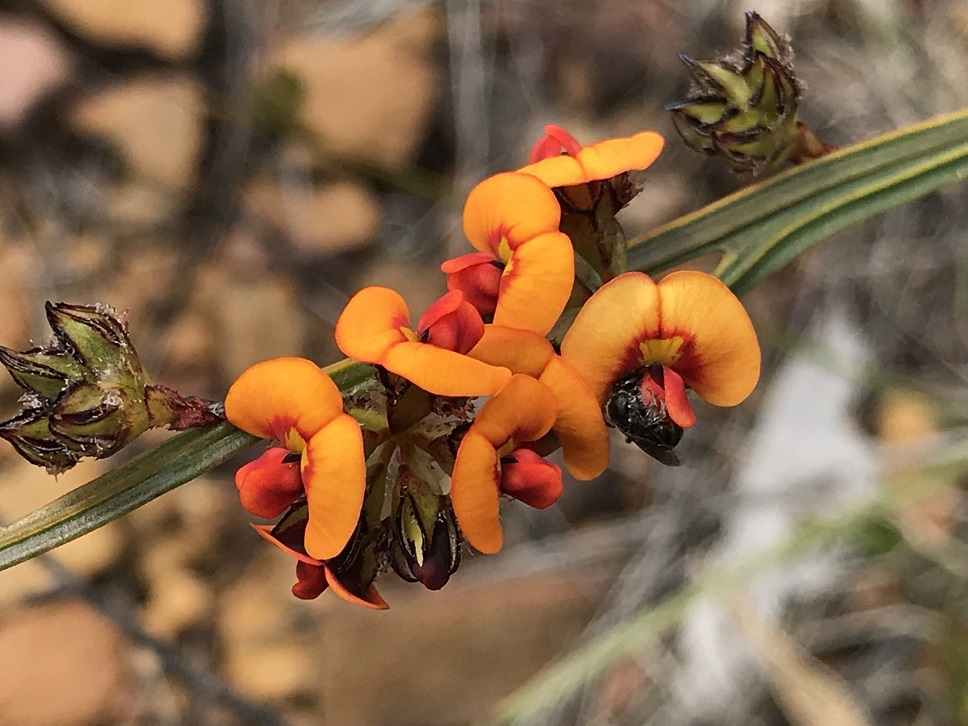
Dillwynia retorta (Eggs & Bacon) is by far our most common pea flower species with populations found widespread across all sections of the Georges River National Park. From early spring, the profusion of yellow and red pea flowers can be seen, although some plants will only have plain yellow flowers, but these are seldom seen. The majority grow as shrubs up to two metres high but low-growing forms may also occur.

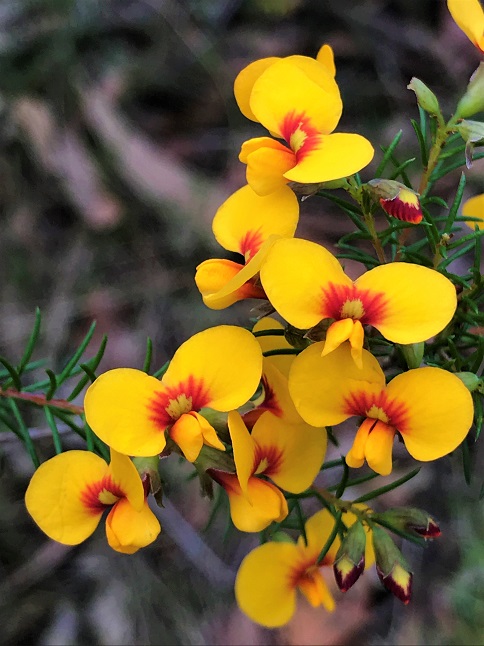
Gompholobium grandiflorum (Large Wedge-pea) is a species common in the Sydney region and the Blue Mountains. It grows as an erect shrub to one metre bearing large yellow flowers. Like other pea flowers, the stamens are enclosed within the ‘keel’ portion of the flower but that doesn’t stop the local native bees from knowing where to look. Look closely for the pollinators in the photos below.
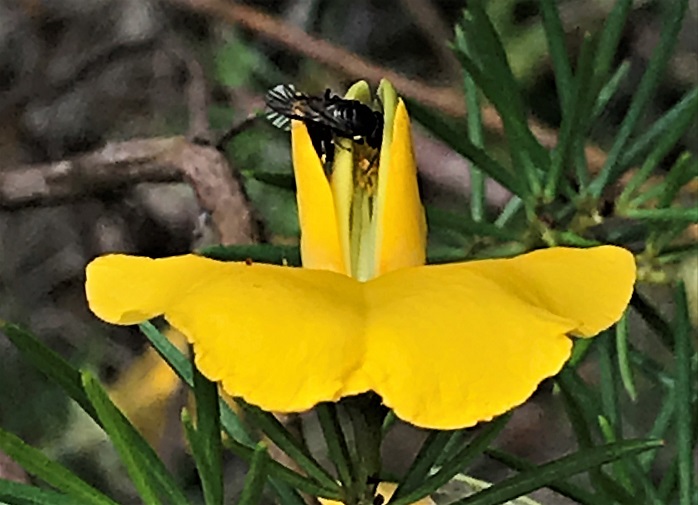
Hardenbergia violacea (along with another locally-occurring pea, Kennedia rubicunda) is quite clever as it has the ability to both climb or creep depending on where the plant initially germinates. If it has nothing around to climb, then it has no choice but to creep until it does find an erect shrub. Even when it is seen to creep over large areas, at flowering time it will hold the flowering stems erect vertically to increase its chances of attracting pollinators.
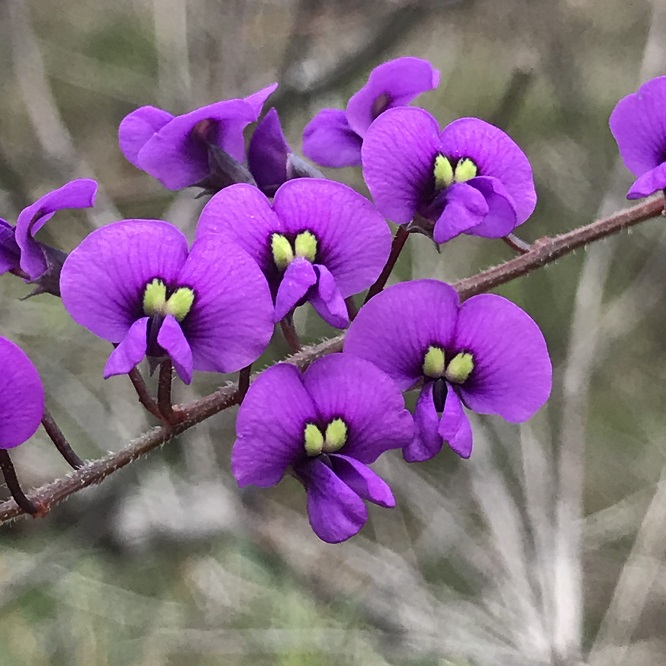
My favourite local pea flower is Mirbelia speciosa. To my knowledge, this species is limited to a particular section of Picnic Point, a fact that has been confirmed by local flora experts who have studied the Georges River National Park for over 30 years. Specimens have been also found in the Sutherland Shire but these occur in the Royal National Park. This species grows as a small shrub to a metre tall and has been seen to occur in three colour forms – pink, purple and rarely white.
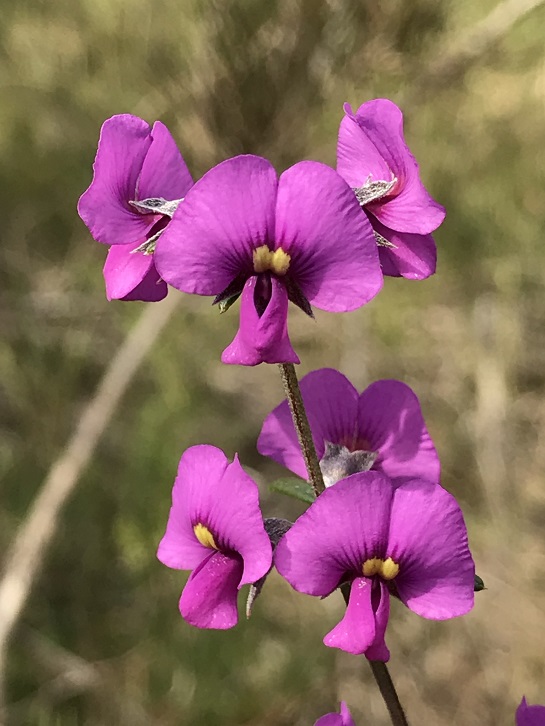
With just a few local peas described here, there are just some of the treasures that can be found in the local bushland of APS East Hills Group. In an area that is also diversely-rich in Proteaceae and Myrtaceae, the many members of the sub-family Faboideae make up a significant part of this ecosystem. While many of us can enjoy the colours on display as they brighten up the landscape, more importantly, they play an important role in sustaining many of the local insect species with the agreement that they will return the favour through pollination.
